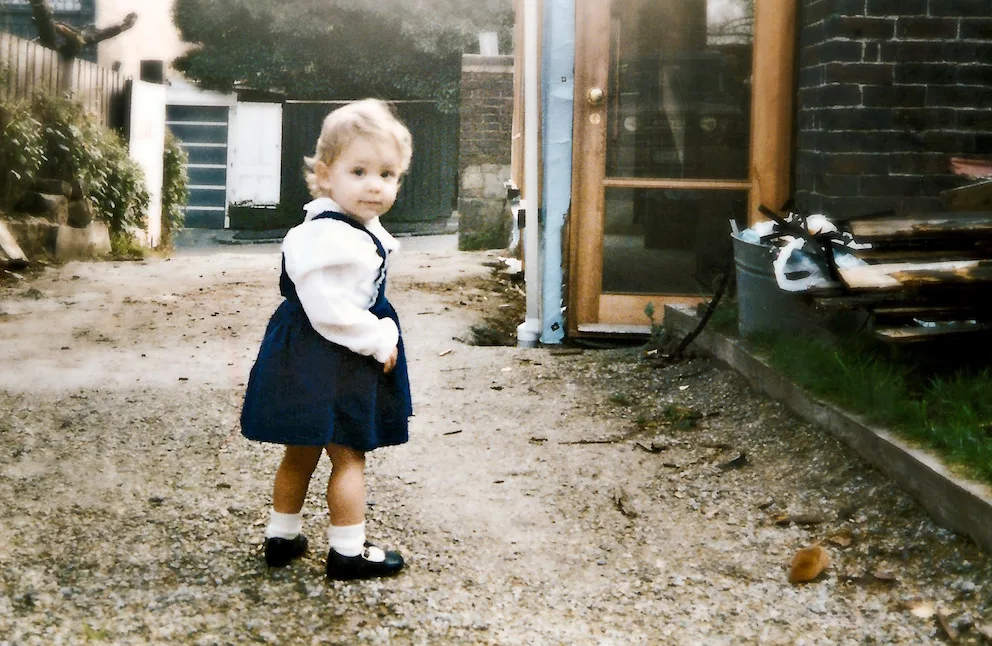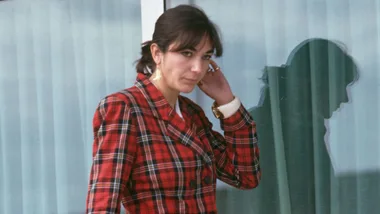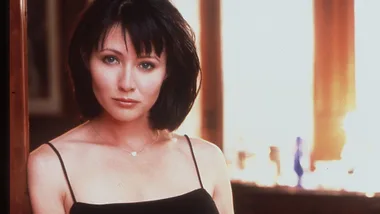Phoebe Handsjuk was alone in the dark, dying on the floor of a garbage room in a luxury apartment tower, having fallen 12 storeys down the building’s main rubbish disposal chute. Her blood left a trail on the floor as she tried to crawl towards the door, dragging her broken body across the ground to try to escape the filthy room. The concierge who later found the 24-year-old’s body initially mistook her for a mannequin that someone had tossed away with the trash.
It was a bizarre way to die. Police who arrived at Balancea Apartments in Melbourne said they had never seen anything like it. Phoebe had plunged down the small rubbish chute of the upmarket St Kilda Road building. She survived the 30-metre fall but died soon after from blood loss, after the rubbish compactor blade all but severed her right foot. Phoebe fought for her life, even as it drained away, but died, faceup, by the rubbish room door.
News of her death on December 2, 2010, so shocked her mother, Natalie, that she sank to her knees in the gutter outside her Clifton Hill home, in Melbourne’s north, wailing: “No! No! No! It’s not true!” Phoebe’s grandfather, Lorne Campbell, a retired police detective, was phoned by his son, Matt, Phoebe’s uncle and then director of television at SBS, at about 10pm. “Dad, there is no way to say this softly, Phoebe’s dead.”
How and why she died is a disturbing tale of alleged cover-ups, police bungling, drugs and alleged murder. Six years after Phoebe’s violent end, her family is still searching for answers. Her mother says she cannot get thoughts of her eldest child and only daughter out of her mind: a vibrant, but troubled young woman with a bright smile. Her absence has “completely shattered” her family.
“Nothing will ever be the same for us.”

The days since the death have been shrouded in sadness, frustration and anger. Despite a coroner’s ruling that Phoebe’s death was accidental and didn’t involve a third party – which ignored the advice of his own assisting counsel – question marks remain over the case.
Why were there unexplained bruises on Handsjuk’s wrists and upper arms? Why was there blood and a smashed glass in her apartment? Why were there no fingerprints on the garbage chute door?
“It is the truth we are missing here,” Natalie says. “We are being told that our daughter, granddaughter and sister put herself into this thing because she was a damaged, disturbed girl and it’s just not true. I don’t know what happened, I just feel sure she didn’t put herself down that chute, either accidentally or on purpose.”
An account of the death of Phoebe Handsjuk is explored in a new book,Into The Darkness (Scribe Publications, $35). Melbourne-based author Robin Bowles says she was inspired by Natalie’s “fierce fight for justice”.
“She’s very determined, despite the pain she has gone through. She’s still angry that there is no resolution for her family,” says Bowles.
“Phoebe was so beautiful and for her to die in that way, it is as if you are saying to the world you are nothing but garbage.” I ask Robin what she believes happened toPhoebe. “Let me say what I think didn’t happen,” she replies. “I don’t think Phoebe put herself down that chute. I think someone else was involved.”
The story of how Phoebe died is not the whole story.

She was born on May 9, 1986, the Chinese year of the tiger, to Natalie and Len, a psychiatrist, and later sister to brothers Tom and Nikolai.
Natalie called her only daughter her Tiger Cub. They grew up on a big block in Richmond, in Melbourne’s inner-east, in a rambling house with a slate roof that Phoebe liked to climb on top of and stare at the sky. She enjoyed physical challenges, including rock climbing and hiking. Her teacher at the nearby Steiner school said she had never met such a strong child.
At 14, Phoebe was “quite hormonal, romantic, intuitive and very sensitive”, her grandmother Jeanette Campbell told the inquest into her death.
At age 15, she started hanging out with the “wrong crowd”, experimenting with drugs like alcohol, speed, ecstasy and marijuana. She ran away from home and lived in a squat in the city’s north for eight weeks, with an ex-prisoner, his partner and their baby. After returning home, she began taking antidepressants to curb her mood swings.
By age 16, as Bowles reveals in her book, Phoebe was in a relationship with a teacher who was almost twice her age – starting a pattern for falling in love with older men. At the same time, she was struggling to deal with the decline of her parents’ marriage.
Natalie says it was her intolerance for alcohol, in particular, that was responsible for driving her off course.
“There are people who can’t cope with it and she was one of them,” she says. “She was too sensitive, she was affected too quickly and easily.”
Former boyfriend Antony Hampel referred to Phoebe’s drinking problem as “the monster”. They met in 2009, when he was almost 40 and she was 23 and working as the receptionist at Linley Godfrey’s hair salon in South Yarra, where Hampel had a regular cut. Hamper is the son of retired Supreme Court Judge George Hampel, QC, and stepson of serving County Court judge Felicity Hampel, SC. He is handsome, smart andan events promoter, with money andglamorous friends.
Linley Godfrey, who had known Phoebe and Hampel before they started dating, didn’t expect the relationship to last. “I thought Phoebe was just going to shag him and flick him,” he says.
They went out for five months before Phoebe moved into his St Kilda Road apartment in October 2009. They seemed an odd couple. She was a homegirl, dressed in a singlet and jeans. He was always at social events.
She loved painting and creative clutter. He “wanted the apartment to look like nobody lived there”, according to his cleaner. Phoebe left the salon early one day, stressed about cleaning an ink stain from the apartment’s carpet before Hampel came home. She told psychologist Joanna Young, who was concerned Phoebe was potentially suicidal, that Antony put her down and made her feel stupid. Hampel told the inquest she was self-destructive and “struggled every day to do the simplest things”. Natalie says her daughter drank to overcome her social insecurities around Hampel and his friends, who were older, attractive and wealthy. She once calledher mum in distress. “She said: ‘Mum, I just don’t know what to do. I love Ant but it’s not working.’”
Phoebe walked out on Hampel four times in the six weeks before she died,only for him to convince her to return. “He was a very controlling person and he was a friend of mine,” says Godfrey. “I felt sorry for him because I feel he was in love with her and he was losing her.”
I ask Godfrey what he thinks is the truth behind Phoebe’s death. He takes a deep breath, “I don’t know,” he says.
“Phoebe loved life. Not a day goes by when I don’t think of her” Linley Godfrey
“Phoebe loved life,” says Lorne Campbell. “Not a day goes by when I don’t think of her and the horror of it,” he says. He was planning to see her on his 70th birthday in December 2010. Instead, he went to see the garbage chute at her apartment. He was staggered by how small the disposal hatch was; it measured only 37cm by 22cm and was more than a metre above the floor. There’s no way Phoebe could have climbed inside in her condition, he says. She was uncoordinated after only two drinks, but toxicology reports revealed she had taken the prescription sedative zolpidem, known as Stilnox, and had a blood-alcohol level of 0.16 – more than three times the legal driving limit.
Then there were no fingerprints on the chute door or steel surrounds, which appeared to have been wiped clean, says Campbell. “Right from the start, I believed she had been murdered.”
Campbell was a police officer for more than 30 years and was like a “dog with a bone” when it came to catching criminals. So when homicide detectives decided within five days that Phoebe had likely committed suicide, he started his own investigation.
To see if Phoebe could have climbed into the chute, he attached safety harnesses to two of her friends and tested them on a replica. They were sober and athletic, but could only climb in with great difficulty.
He also pointed out faults in the police investigation, such as the failure to examine CCTV footage, the failure to seize computers in the apartment or to test two drinking glasses left in the kitchen.
Police also failed to take samples of mysterious, large shoe prints leading away from the apartment. “They just missed so much,” he says.
A full inquest into Phoebe’s death was held in 2013, despite the objections of Hampel’s barrister, who said there was no basis for believing she had been murdered. Natalie raised about $50,000, including money from donations and her own savings, to cover her family’s legal costs.
Hampel told the inquest that the night before her death, Phoebe was in “recovery mode” from a heavy drinking session. She was still in bed when he left for work the next morning, he says. The last time Phoebe was seen alive in public was just before midday, on the lobby’s CCTV cameras, during a fire evacuation. She was stumbling slightly as she held Antony’s bull terrier Yoshi on a leash.
The coroner subsequently ruled that she entered the chute sometime between 12.03pm and about 7pm, only minutes before her body was found by the concierge. When Hampel returned home that night just after 6pm, he told the inquest that the apartment was empty. He said he found Phoebe’s bag, keys and wallet on the kitchen counter, and broken glass on the floor. There was blood on the mouse and keyboard of the computer they shared.
“I was becoming very concerned at that point,” he said. He used the computer, had a beer and ordered takeaway. When the deliveryman arrived, he mentioned there were police in the downstairs foyer.
“I was becoming very concerned at that point”
Boyfriend Anthony Hampel
Hampel went downstairs and was told that a body had been found. When asked at the inquest whether he had any involvement in Phoebe’s death, he said: “Absolutely not.”
Coroner Peter White agreed. On December 10, 2014, four years and eight days after Phoebe died, he found she had climbed unassisted into the rubbish chute while in a “sleepwalking state” and fell down feet first, due to consumption of alcohol and Stilnox.
Her “penchant for climbing” likely caused her to enter the chute without having any intention to cause herself harm, he said. He ruled out suicide or the involvement of any third party and complied with a request from Hampel’s lawyer to exonerate his client.
Police have never regarded Hampel as a suspect and marie claire does not suggest he was involved in Phoebe’s death. Bowles says Hampel is now married and has moved out of the Balancea apartment block. Hampel declined to comment for this article.
The outcome of the inquest was a blow to Phoebe’s family, especially as the coroner ignored submissions from his assisting counsel, Deborah Siemensma, a copy of which was obtained by The Sunday Age.
Siemensma felt the combination of evidence – including unexplained bruises to Phoebe’s upper arms, the blood in the apartment and the lack of fingerprints on the chute – and the inadequacies of the initial police investigation did “not enable a positive finding to be made on the balance of probabilities as to the involvement of Mr Hampel” or another third party.
Siemensma continued, “That is not to say he had any involvement, but rather, there is an inability to ‘exculpate’ on the balance of probabilities,” adding “aspects of Mr Hampel’s evidence that were unsatisfactory”.
Phoebe’s family hoped to take their case to the Supreme Court, but ran out of money. They also received legal advice that any appeal of the coroner’s finding was unlikely to succeed, as Victorian law only allows such appeals on errors of law not fact.
“Natural justice is the only thing we’re going to get out of this”
Phoebe’s mother, Natalie
Natalie says the legal system has failed those who need it most. “Natural justice is now the only thing we’re going to get out of this. Karma will come to whoever has been involved, we just have to be patient.”
In the meantime, she mourns the loss of her Tiger Cub at her home at Mallacoota, East Gippsland, a place much visited by her family before she moved there to escape Melbourne and its painful memories.
Phoebe’s artwork and photographs cover the walls. “I don’t think I have properly accepted that she is not here,” she says. “Every now and then I will watch a lovely exchange between a mother and daughter or get news that one of Phoebe’s friends is pregnant, and it makes it all fresh again.”
A short walk from Natalie’s cottage is a seat with an ocean view, where she often discussed her daughter’s future with her. Phoebe planned to move to Mallacoota to work and save for a trip to India. She wanted to do aid work. Natalie now sits there alone, pondering why her daughter died.
Perhaps Phoebe got in a fight with a visitor to the apartment, she says. “I think she may have said something to upset someone, I don’t know who but I think that she’s been injured and whoever was involved has panicked and tried to get rid of her.”
Watching a kite hovering in the sky above reminds her of Phoebe. “I have got a piece of her artworkmwith the words ‘Let. Me. Fly’, and I just hope she’s flying,” she says. “She just wanted to be loved and to help people. I hope that she’s at peace and getting ready for her next journey.”
Campbell still hopes that someone will come forward with the truth. He thinks his granddaughter’s death may be related to Melbourne’s drugs trade.
Maybe Phoebe knew too much or offended the wrong people, he muses. “I’m hopeful something shakes out of this eventually. It is such a waste of life.”
 Supplied
Supplied









